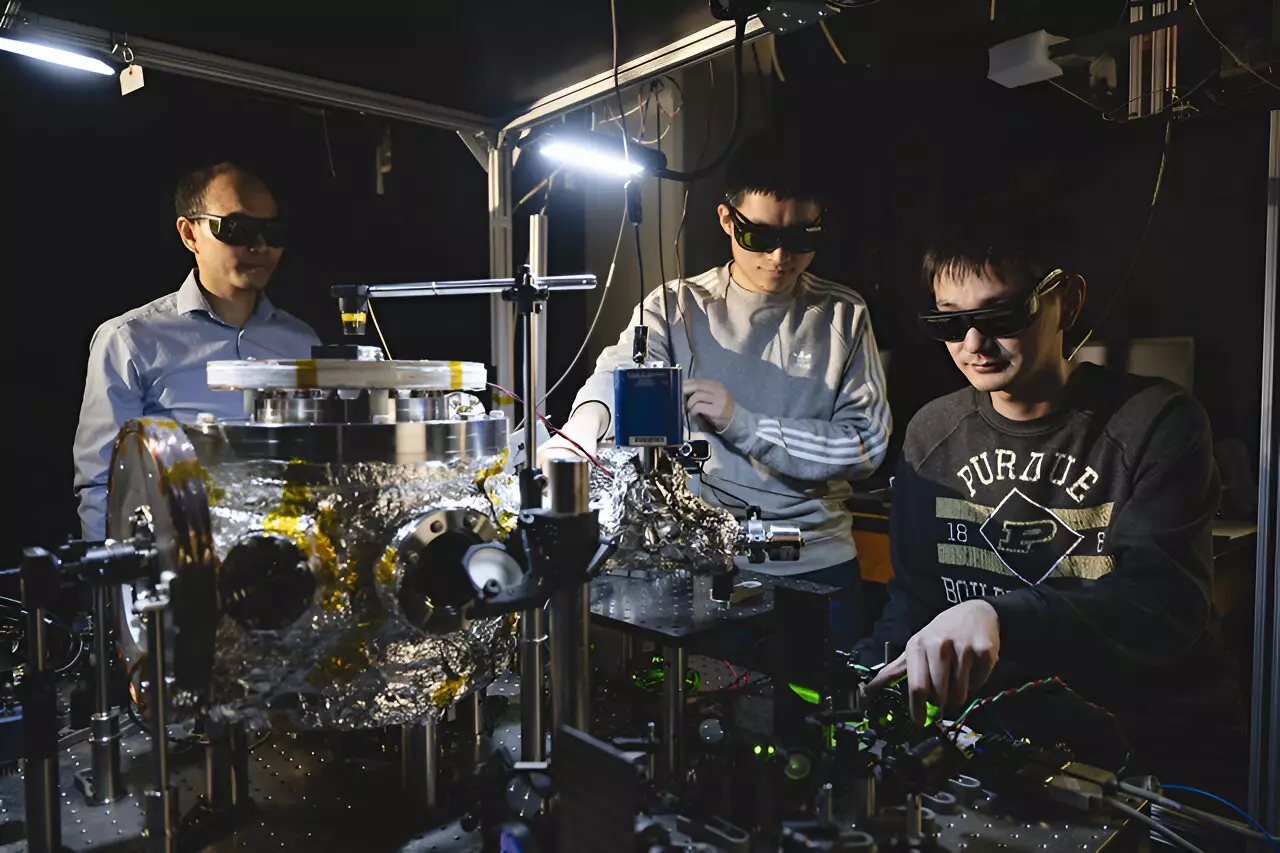In a remarkable fusion of creativity and cutting-edge science, researchers at Purdue University have orchestrated what has been dubbed the “world’s smallest disco party.” At the heart of this experiment is a fluorescent nanodiamond, masterfully levitated and spun at dizzying speeds, creating a visual spectacle of multicolor lights as it rotates. This endeavor not only showcases a novel method of studying quantum systems but also serves as a catalyst for potential advancements in quantum technology.
Under the leadership of Tongcang Li, a professor in the departments of Physics and Astronomy as well as Electrical and Computer Engineering, the team has recently published their findings in Nature Communications. Reviewers have hailed this work as a watershed moment in the realms of rotating quantum systems and levitodynamics, underscoring its significance for the scientific community. But what does it mean for our understanding of the quantum world?
Understanding Spin Qubits Through Rotation
At its core, this research explores the behavior of spin qubits embedded within the fluorescent nanodiamonds. These extremely small diamonds, measuring about 750 nm in diameter, are not mere objects of light; they possess quantum properties that can be harnessed for precise measurements and experiments. By leveraging advanced ion trapping techniques, the Purdue team successfully created a high-vacuum environment, minimizing prior challenges such as the loss of diamonds during experimentation and difficulties in reading the properties of their embedded spin qubits.
In a feat of engineering and creativity, the team managed to rotate these diamonds at an astounding rate of up to 1.2 billion revolutions per minute. Observing this rapid rotation enabled the researchers to study an intriguing phenomenon known as the Berry phase, a geometric phase acquired over the course of an adiabatic process when a quantum system is subjected to cyclic changes. This phase has important implications in understanding various quantum systems and further delves into the complexities linking quantum mechanics with gravity.
The creation of the fluorescent nanodiamonds involved utilizing high-pressure and high-temperature techniques to foster conditions conducive to diamond formation, followed by exposing these diamonds to high-energy electrons. The resultant nitrogen-vacancy centers within the diamonds are critical for hosting the electron spin qubits essential for their experiments. Under the illumination of a green laser, these diamonds emit red light, providing a means to ascertain the electron spin states.
Furthermore, the team ingeniously monitored the rotational properties of the diamond using an additional infrared laser, akin to the way light scatters from a disco ball. As the diamond spins, the direction of the scattered light varies, conveying crucial information about the rotation and offering insights into the behavior of the embedded spin qubits.
The breadth of this research was not limited to the Purdue team alone, as contributions from external experts enriched the project significantly. Collaborators from Sandia National Laboratories and Washington University in St. Louis provided crucial insights and suggestions to enhance the experimental design and facilitate the smooth writing of the manuscript, illustrating the importance of interdisciplinary collaboration in scientific advancement.
The engineering underpinning this project is equally impressive, incorporating advanced simulation software tools like COMSOL Multiphysics for the 3D design of the integrated surface ion trap. The team meticulously calculated parameters to optimize the trap’s design, enabling them to manipulate the motion of the diamond effectively. The fabrication process further involves sophisticated photolithography techniques, showcasing the fusion of advanced physics and engineering methodologies.
Implications for Future Research and Applications
The implications of this research stretch far beyond the confines of the laboratory. The ability to levitate and manipulate hitherto elusive nanodiamonds enables a platform for investigating the enigmatic relationship between quantum mechanics and gravity. As the line between these two fundamental scientific paradigms continues to blur, the potential to experimentally explore aspects of quantum gravity becomes tantalizingly within reach.
Such advancements could revolutionize the fields of precision measurement and sensor technology. For instance, the U.S. Air Force Research Laboratory is actively investigating the application of optically levitated nanoparticles for navigation and communication challenges. Innovatively leveraging levitated micro-scale particles could lead to solutions that enhance both scientific research and practical applications across various industries.
As Tongcang Li and his team continue this groundbreaking investigation into the swirling world of rotating quantum systems, they stand on the precipice of a new frontier in scientific discovery. With state-of-the-art facilities and a commitment to inter-disciplinary collaboration, the researchers at Purdue University are poised to illuminate the dark recesses of quantum mechanics, unveiling fresh insights that could forever alter our understanding of the universe. In this small disco party of diamonds, the dance of science is only just beginning.


Leave a Reply